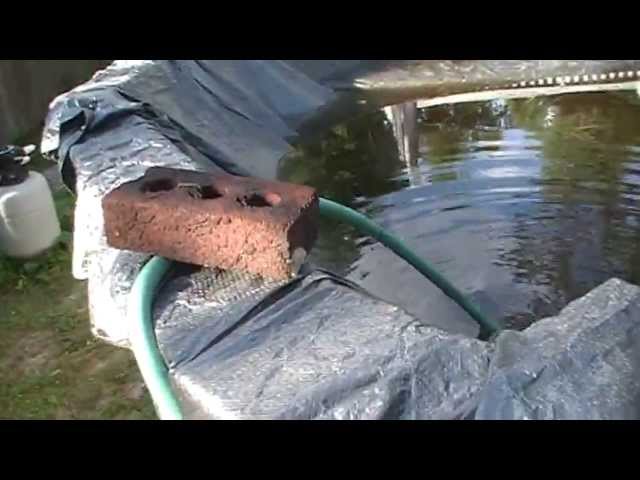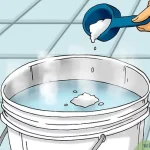Draining your pool is an essential part of pool maintenance. Whether you are closing your pool for the winter or need to lower the water level for cleaning or repairs, knowing how to drain a pool properly is crucial. One popular method for draining a pool is by using a hose. In this guide, we will walk you through the steps on how to drain a pool with a hose effectively and safely.
Materials Needed:
- A garden hose long enough to reach a suitable drainage area
- A submersible pump (optional, for faster draining)
- A pool brush
- A pool vacuum (optional, for cleaning while draining)
- A pair of work gloves
- A pool cover (to prevent debris from entering the pool)

Credit: joyfulabode.com
Steps to Drain a Pool With a Hose:
- Turn off the pool pump: Before you begin draining your pool, make sure to turn off the pool pump and any other electrical equipment connected to the pool.
- Choose a drainage area: Select a suitable area where the water from your pool can be safely drained. Ensure that the water will not cause flooding or damage to nearby structures.
- Attach the hose to the pool’s drainage outlet: Connect one end of the garden hose to the drainage outlet on your pool. Make sure it is securely attached to prevent leaks.
- Extend the hose to the drainage area: Extend the other end of the hose to the chosen drainage area. Ensure that the hose is long enough to reach without kinking or bending.
- Start siphoning the water: To start the siphoning process, place the end of the hose in the drainage area and create a siphon by sucking on the hose or using a pump to remove air from the hose.
- Monitor the draining process: Keep an eye on the water level in the pool as it drains. Periodically check the hose to ensure it is functioning correctly and adjust the position if needed.
- Adjust the flow rate: If you are using a submersible pump, adjust the flow rate to control the speed at which the pool drains. This can help prevent flooding in the drainage area.
- Clean the pool while draining: While the pool is draining, take the opportunity to clean the pool walls and floor using a pool brush and vacuum. This will save you time once the pool is completely drained.
- Secure the pool cover: To prevent leaves, debris, or animals from entering the pool during the draining process, cover the pool securely with a pool cover.
- Monitor the process: Continue to monitor the draining process until the pool reaches the desired water level. Once the pool is drained, disconnect the hose and store it properly for future use.

Credit: m.youtube.com
Safety Precautions:
- Wear work gloves to protect your hands while handling the hose and pump.
- Do not leave the draining pool unattended, especially if you are using a submersible pump.
- Avoid draining pool water into storm drains or areas that can cause flooding.
- Ensure the drainage area can handle the volume of water being discharged from the pool.
- Keep children and pets away from the draining pool to prevent accidents.
Benefits of Draining a Pool:
Draining your pool regularly offers several benefits, including:
- Preventing algae growth: By removing old water, you reduce the risk of algae buildup, making it easier to maintain clean water.
- Improving water quality: Fresh water helps maintain proper chemical balance and clarity in your pool.
- Facilitating repairs: Draining the pool allows for easier access to the pool shell for repairs or maintenance.
- Extending equipment life: Regular draining can help extend the life of your pool pump and filtration system by reducing strain and buildup.
By following these steps and safety precautions, you can effectively drain your pool with a hose, ensuring proper maintenance and longevity of your pool. Remember to regularly check and clean your pool to keep it in optimal condition for enjoyment throughout the swimming season.





